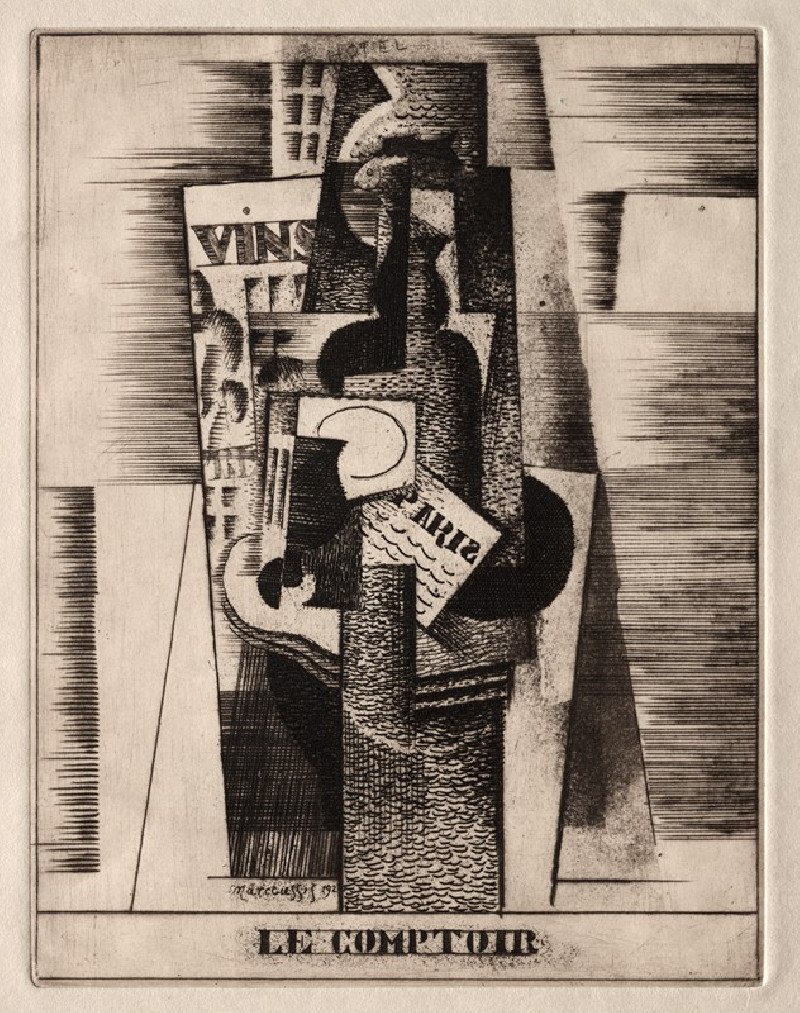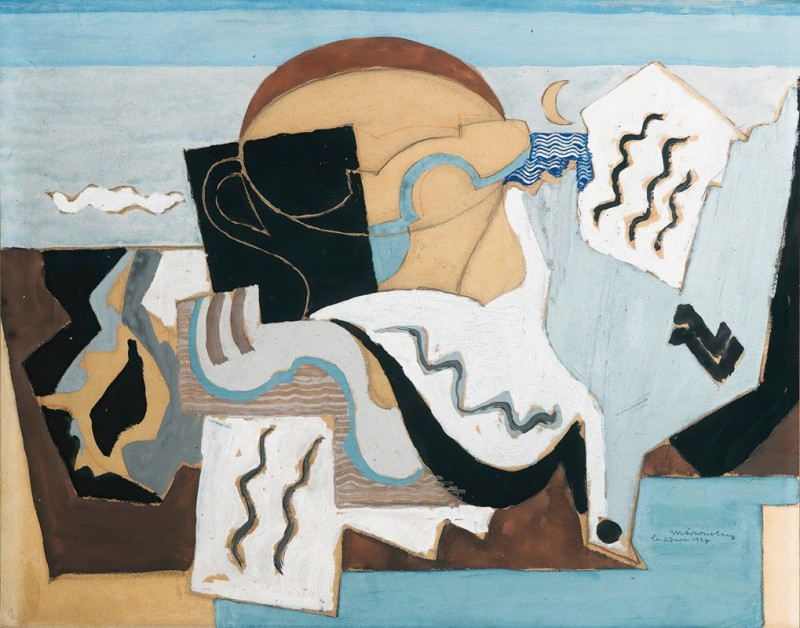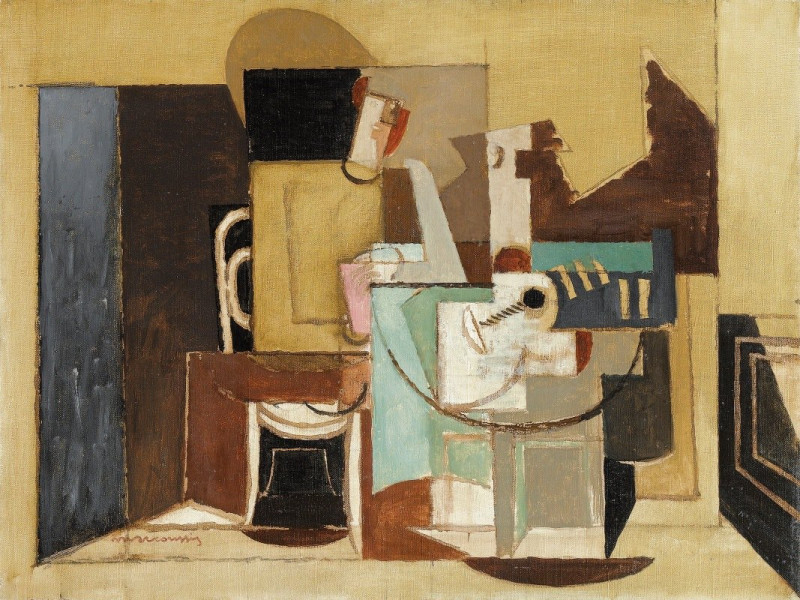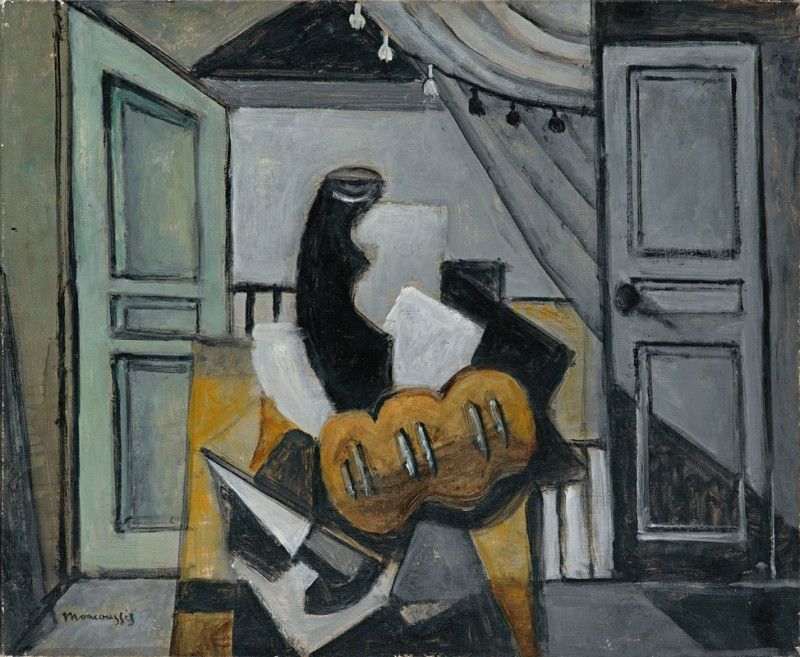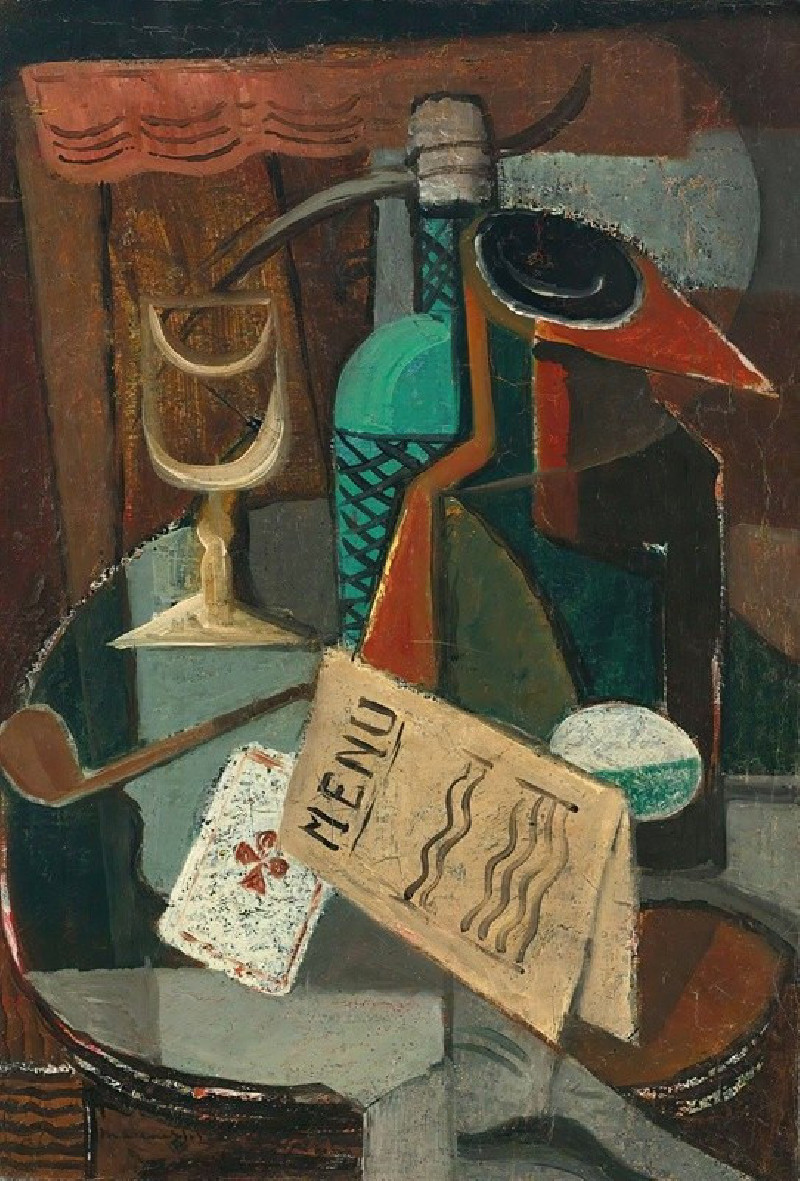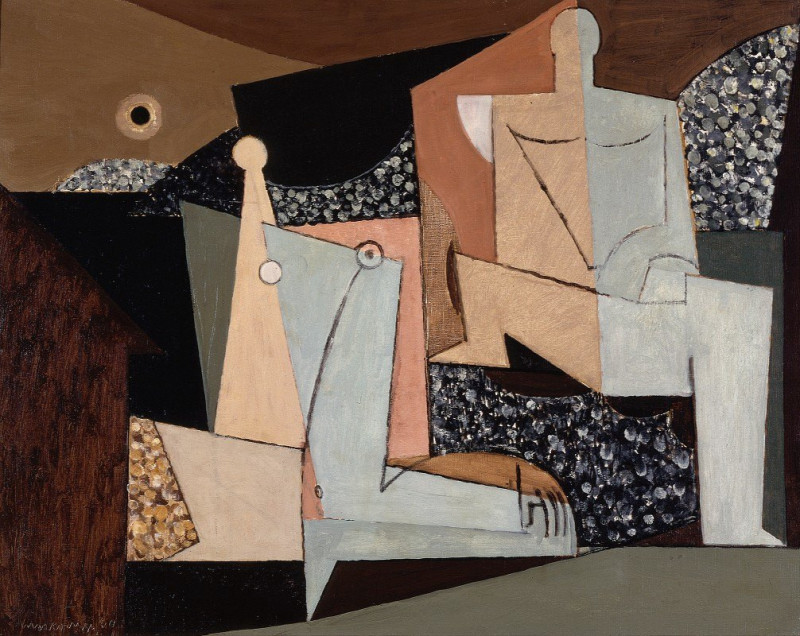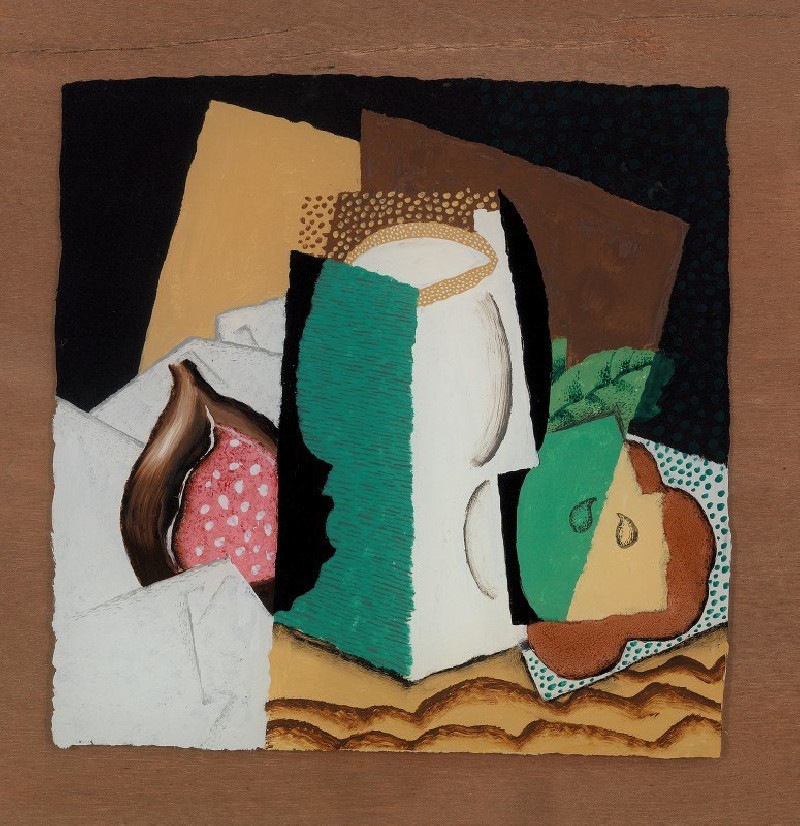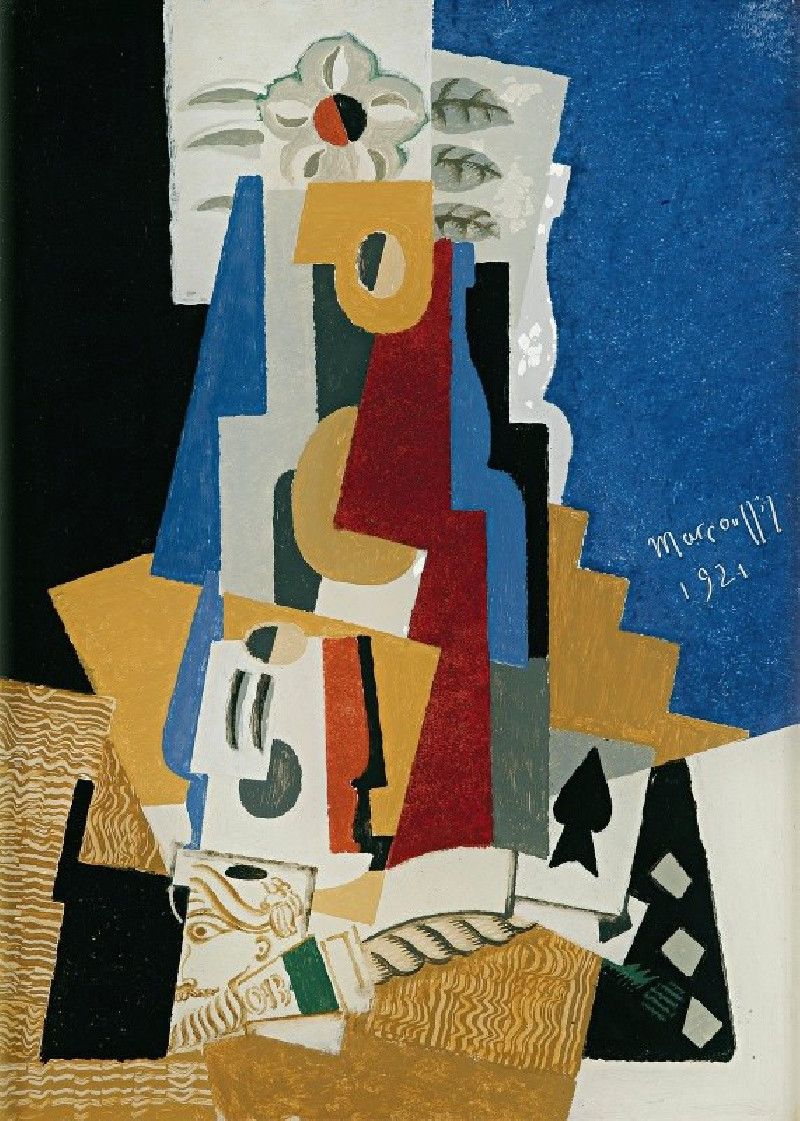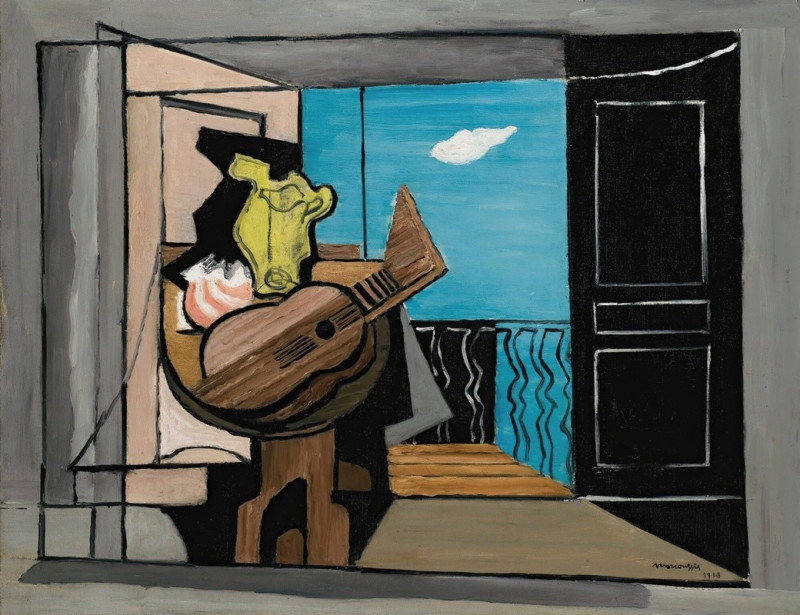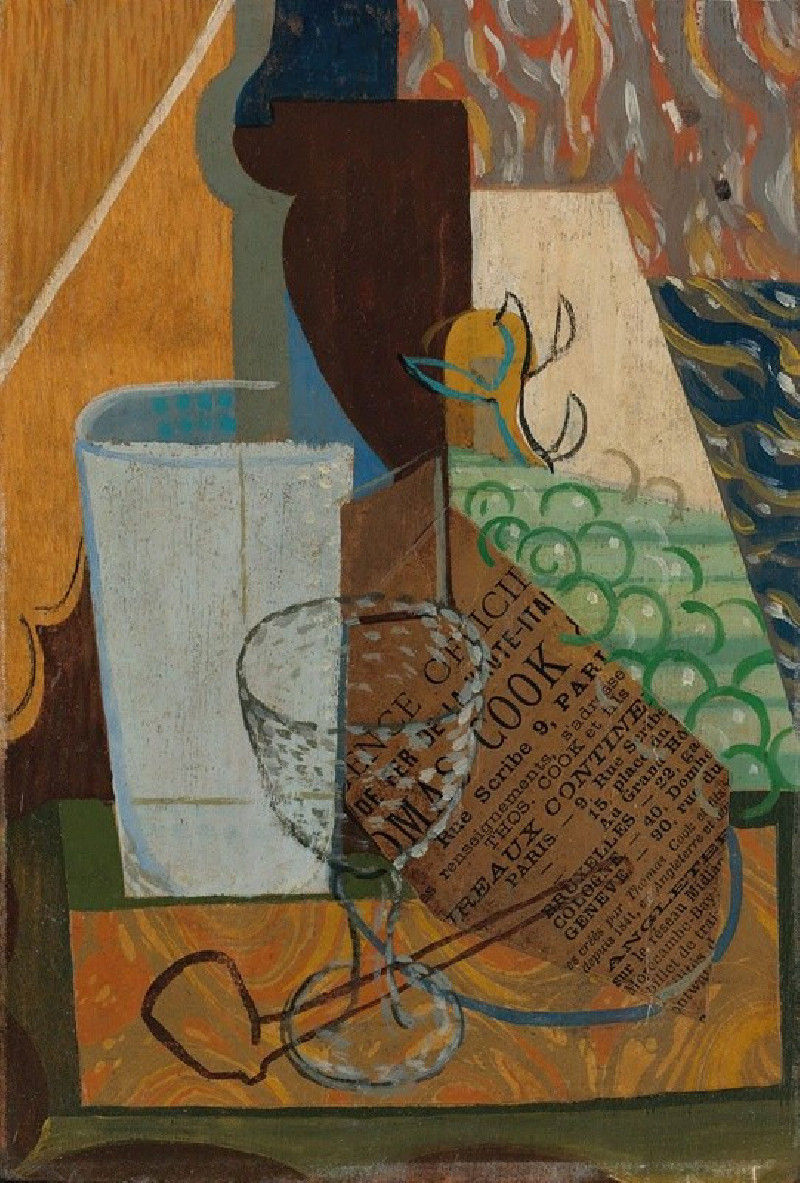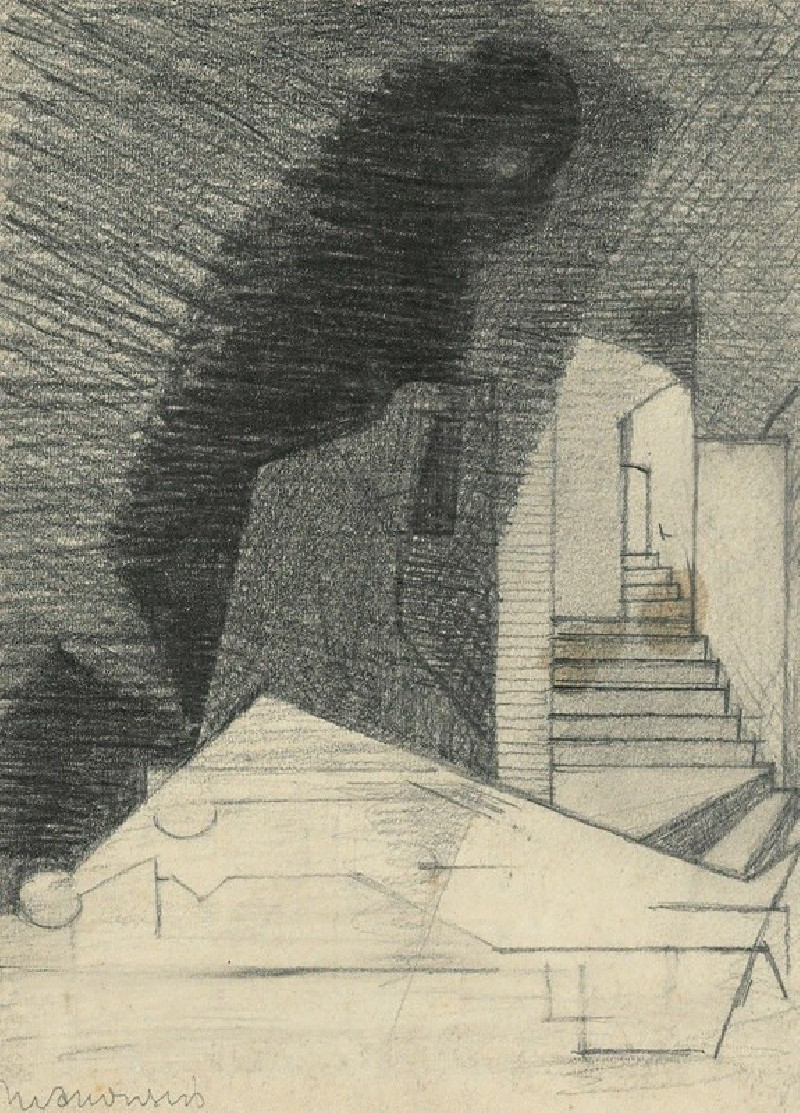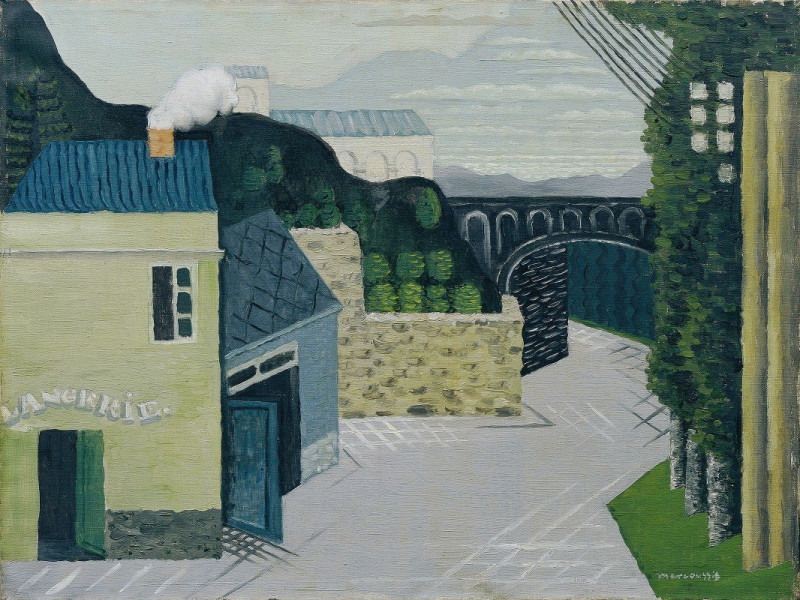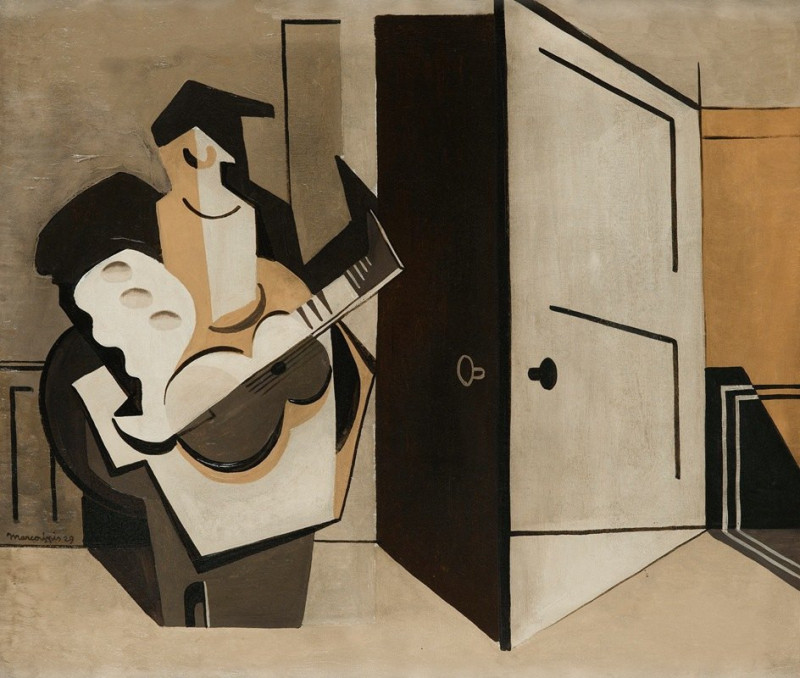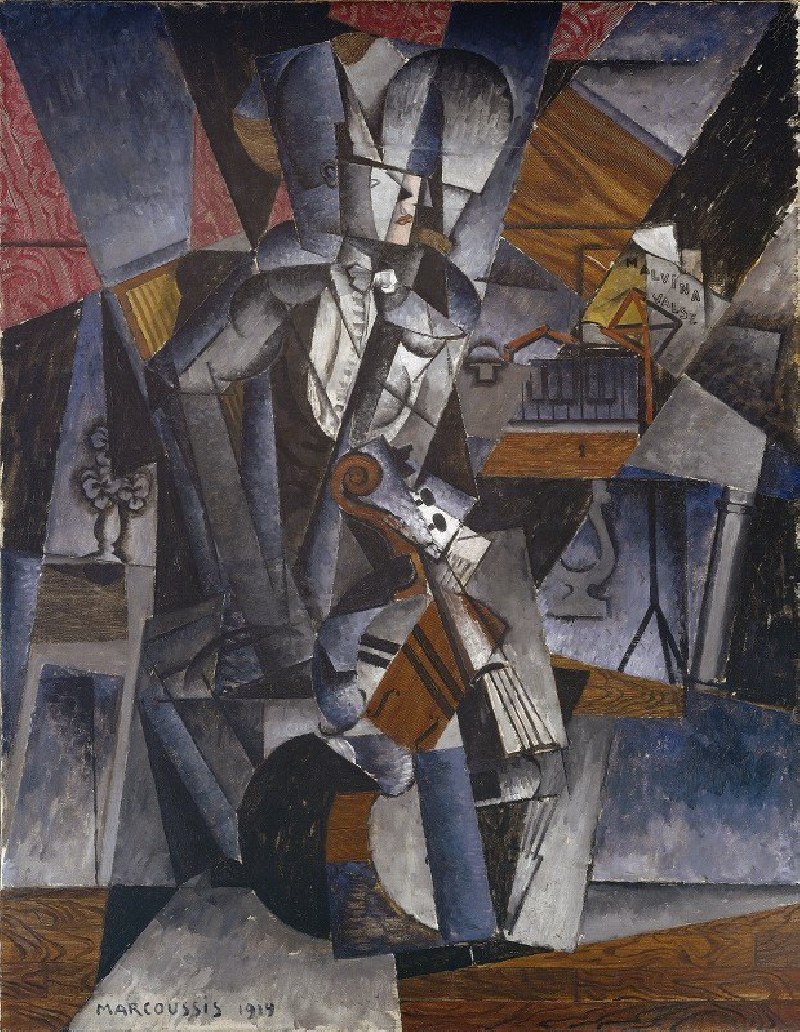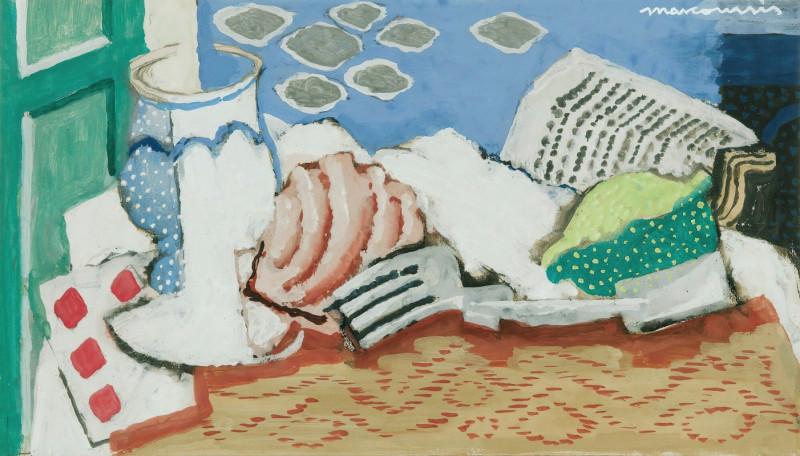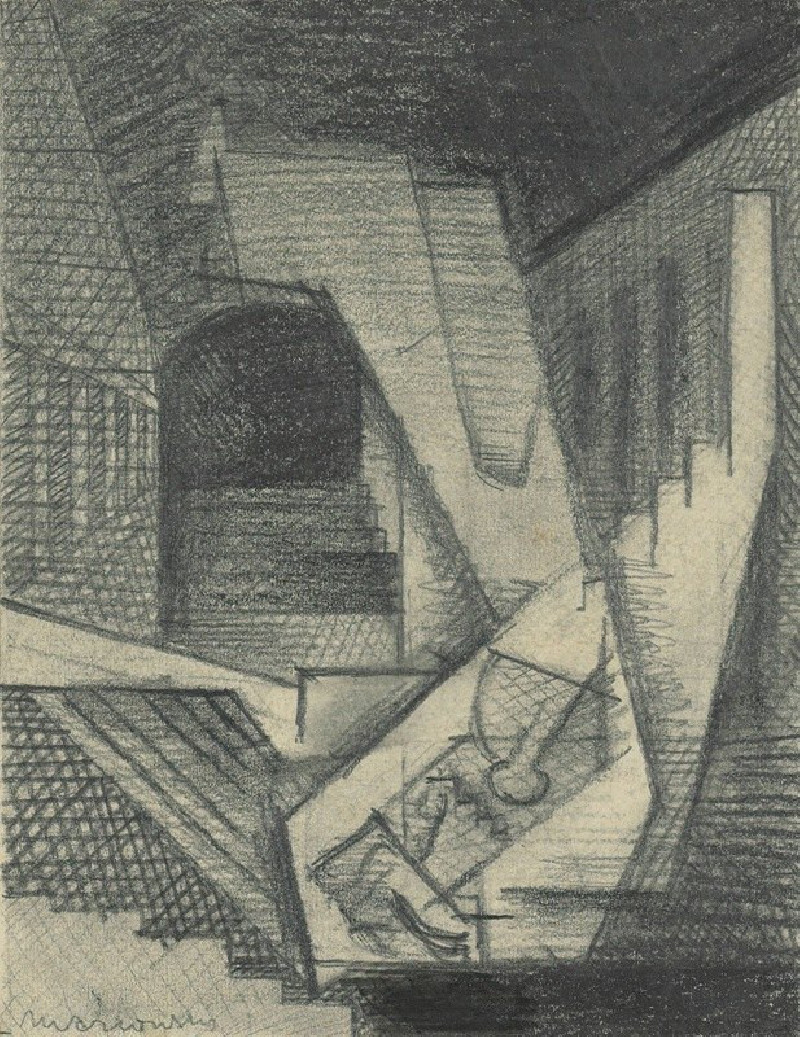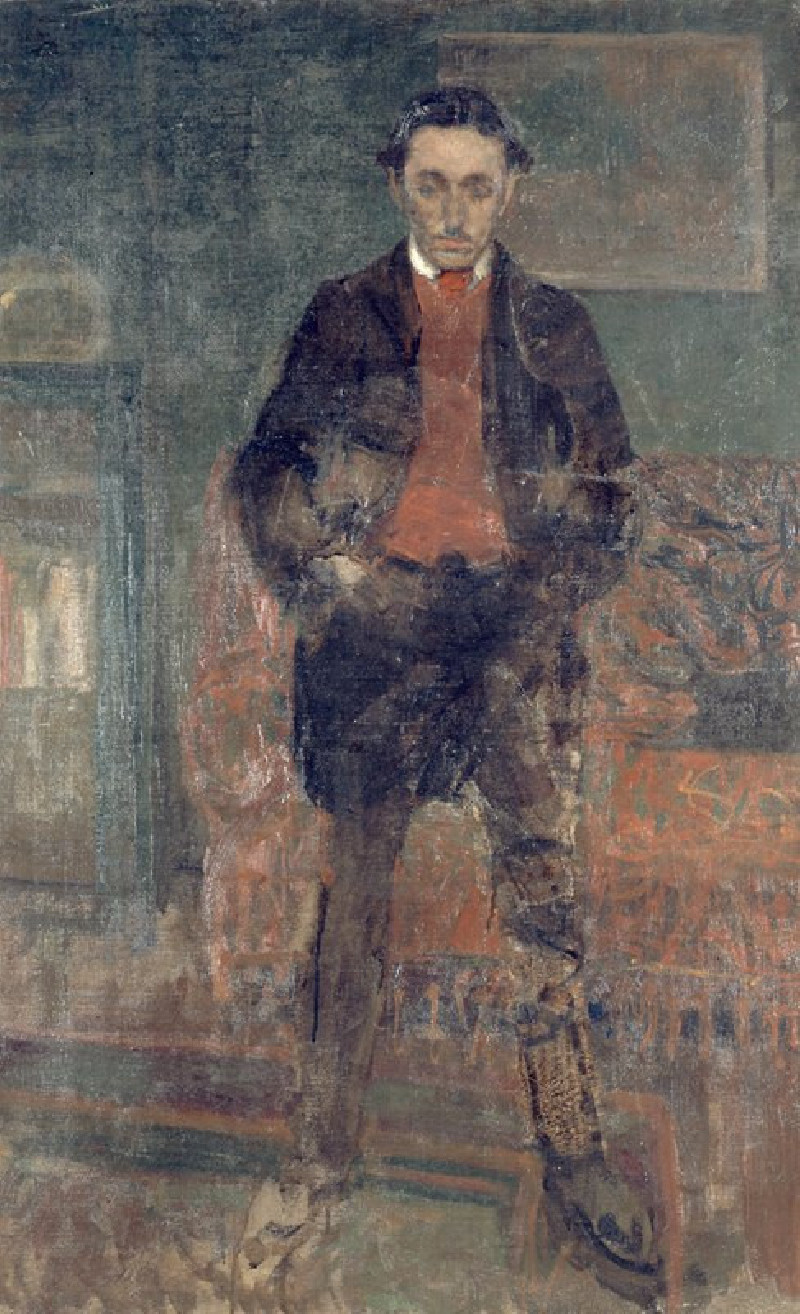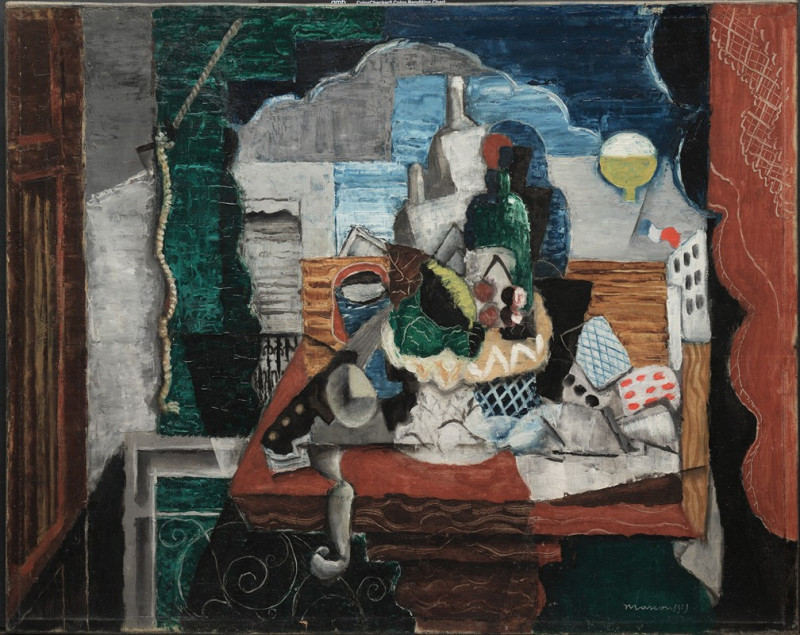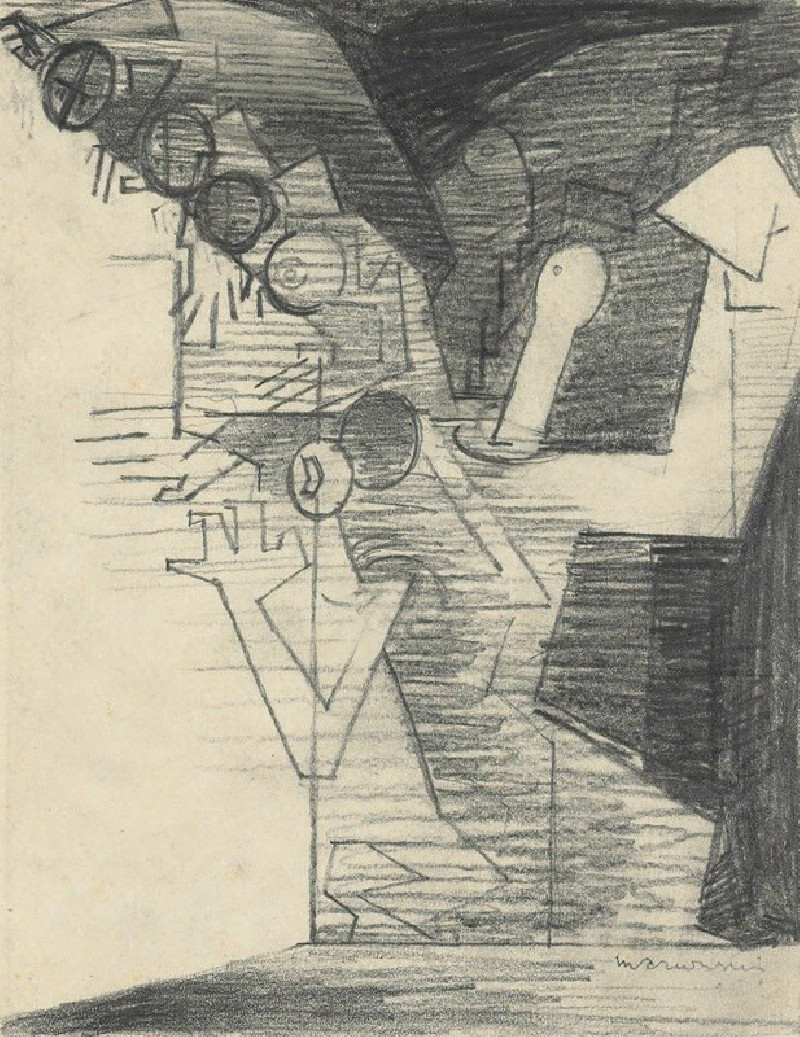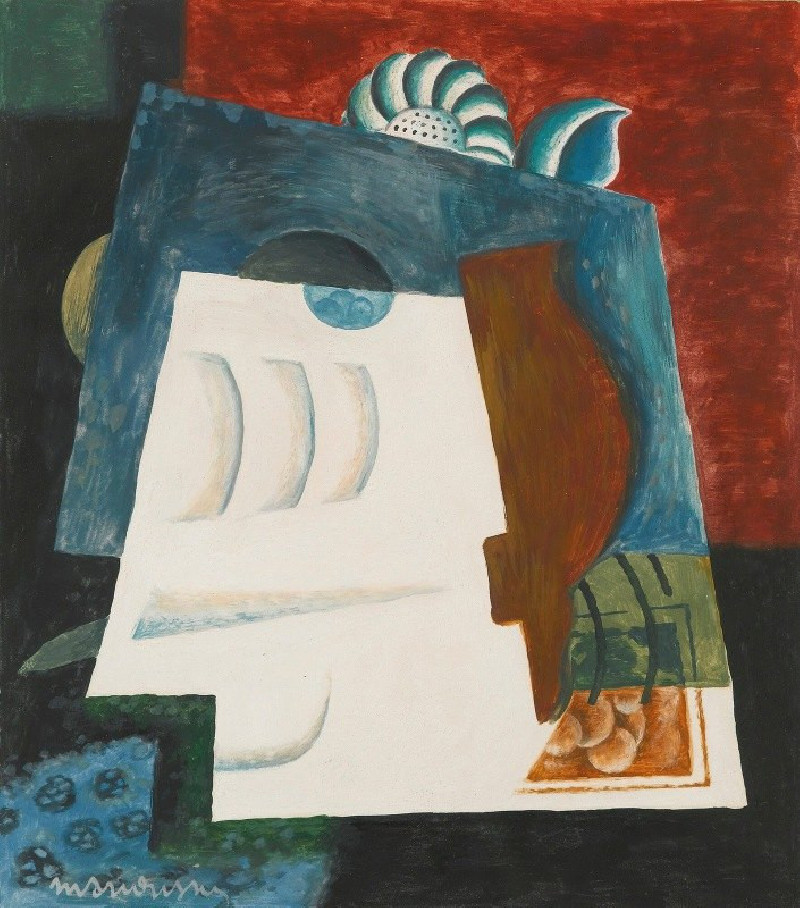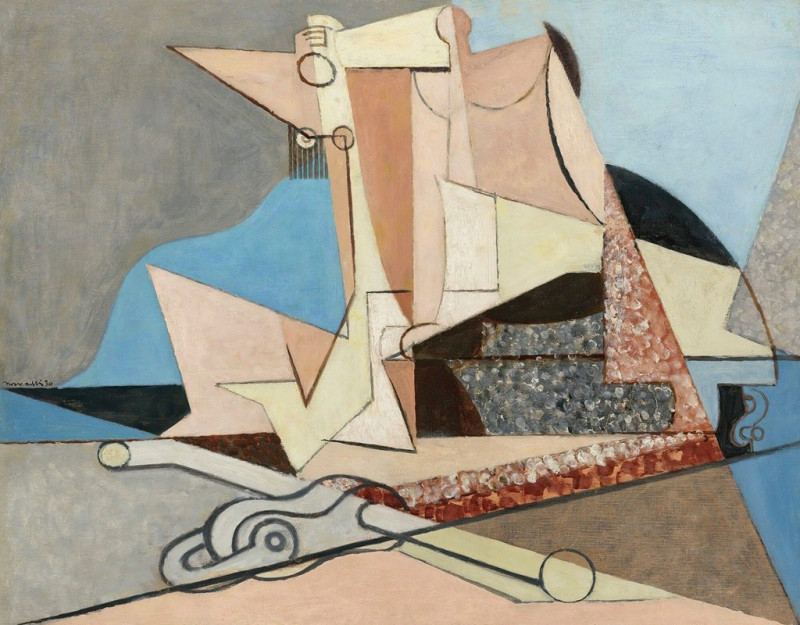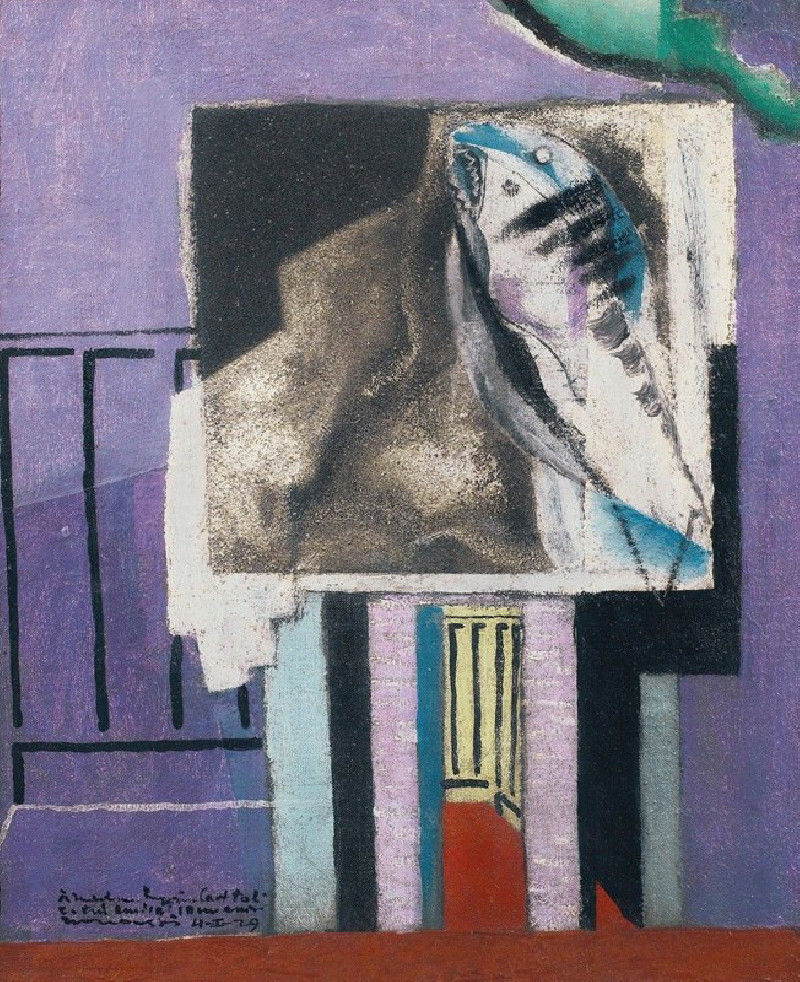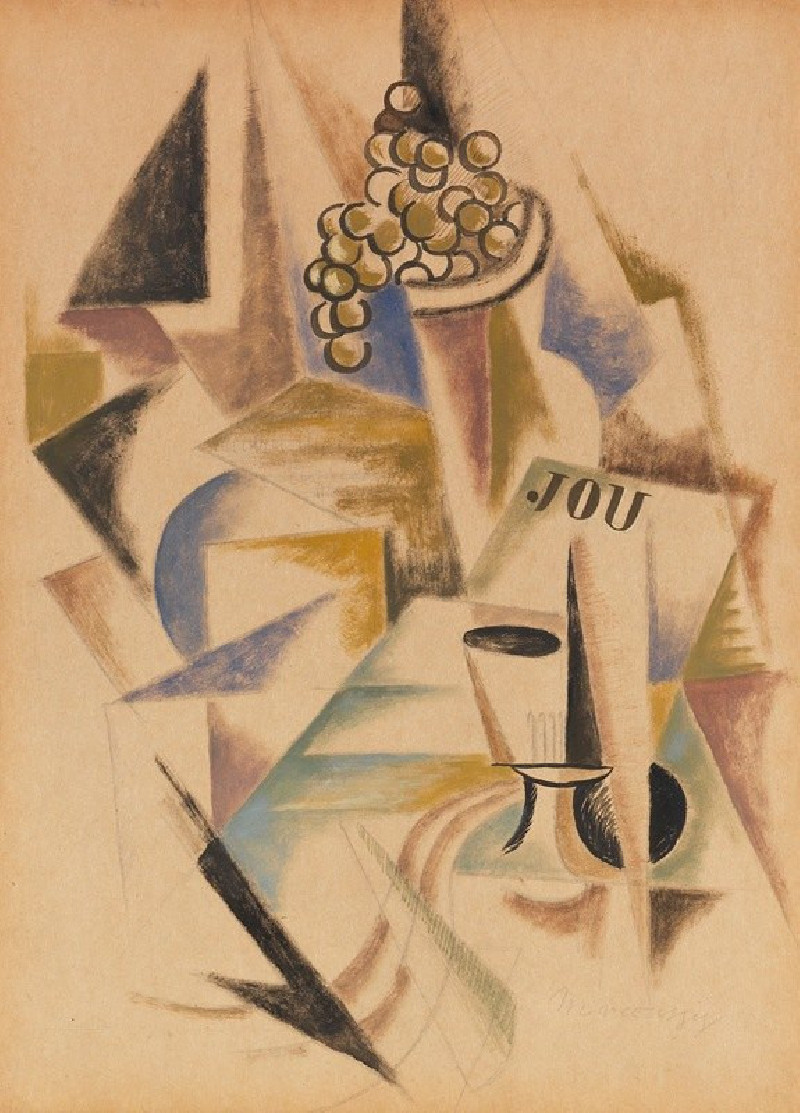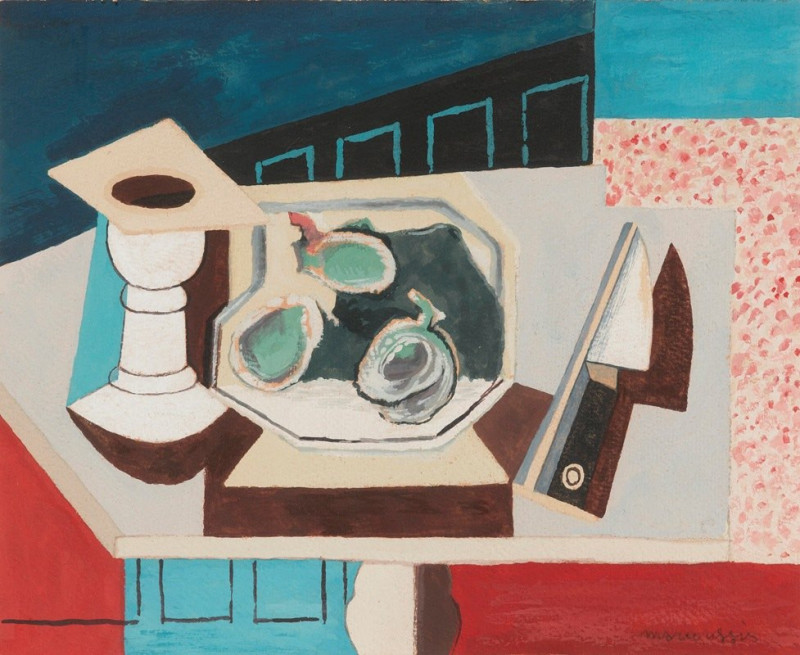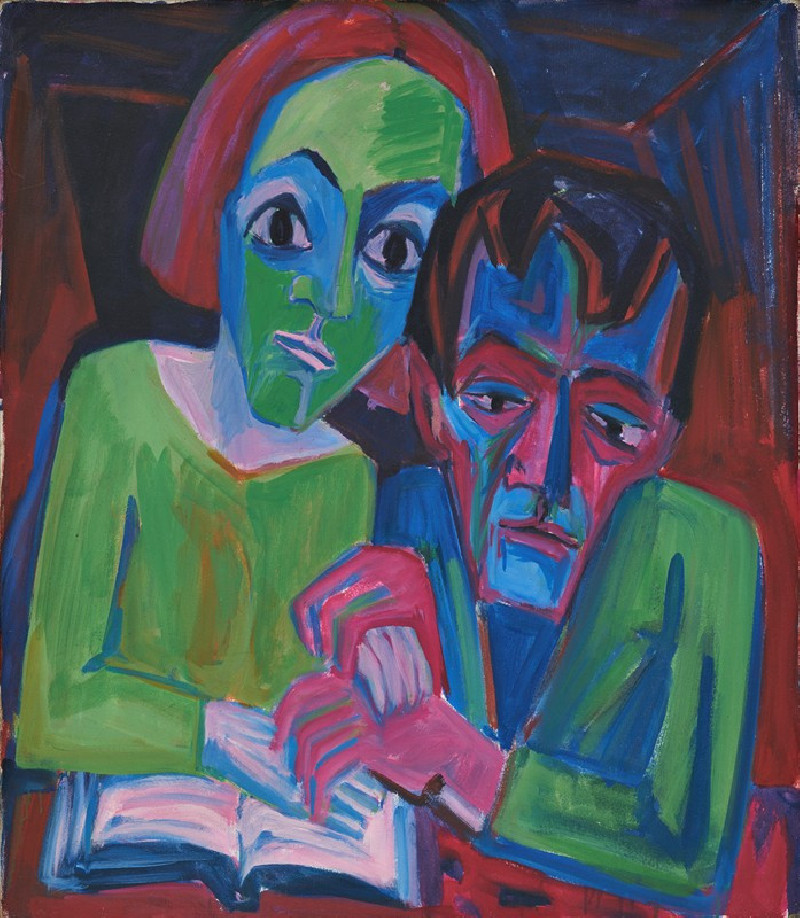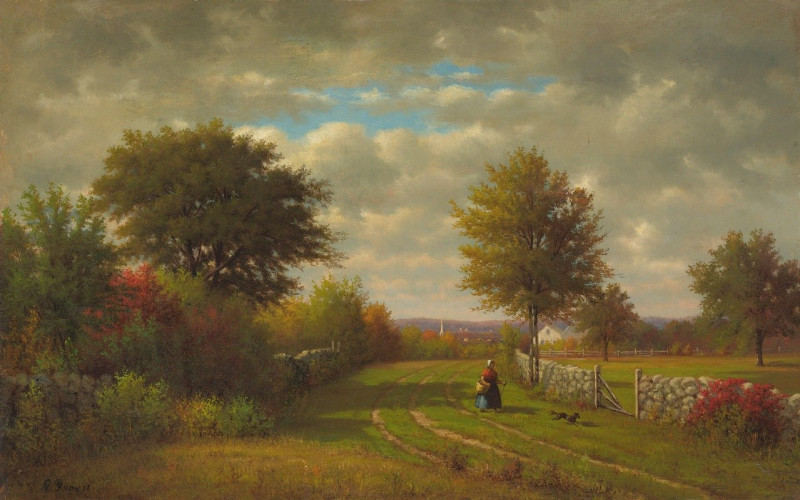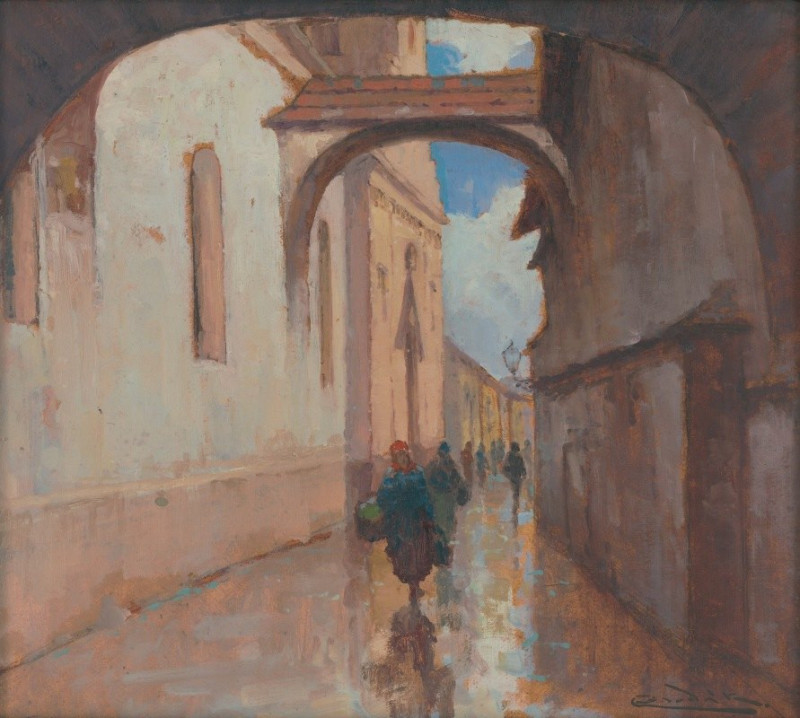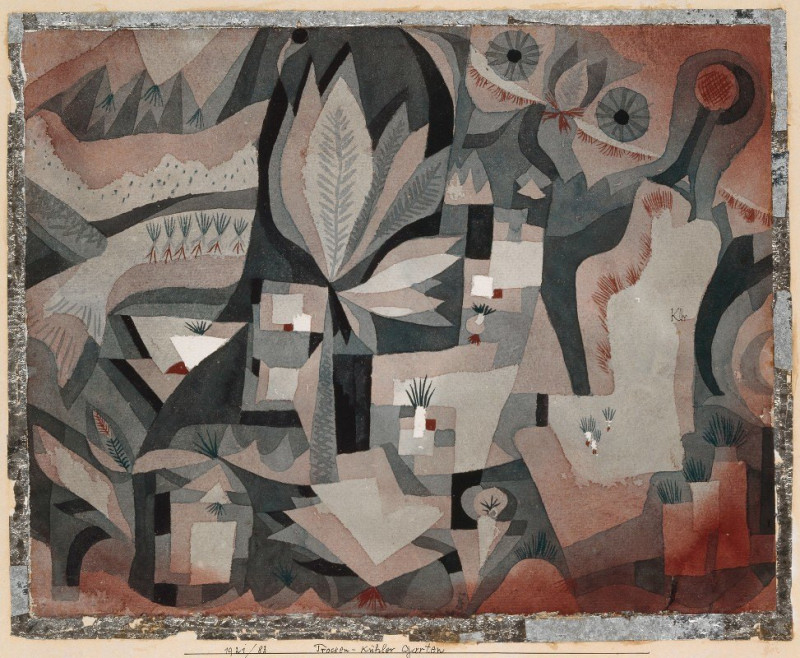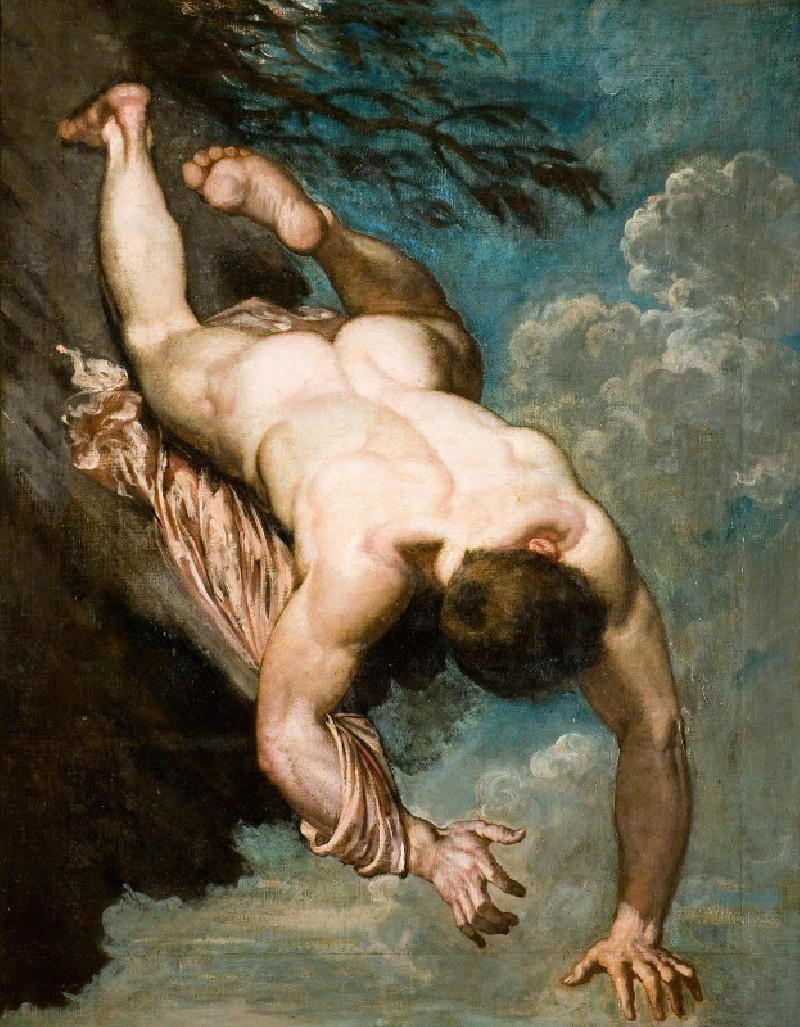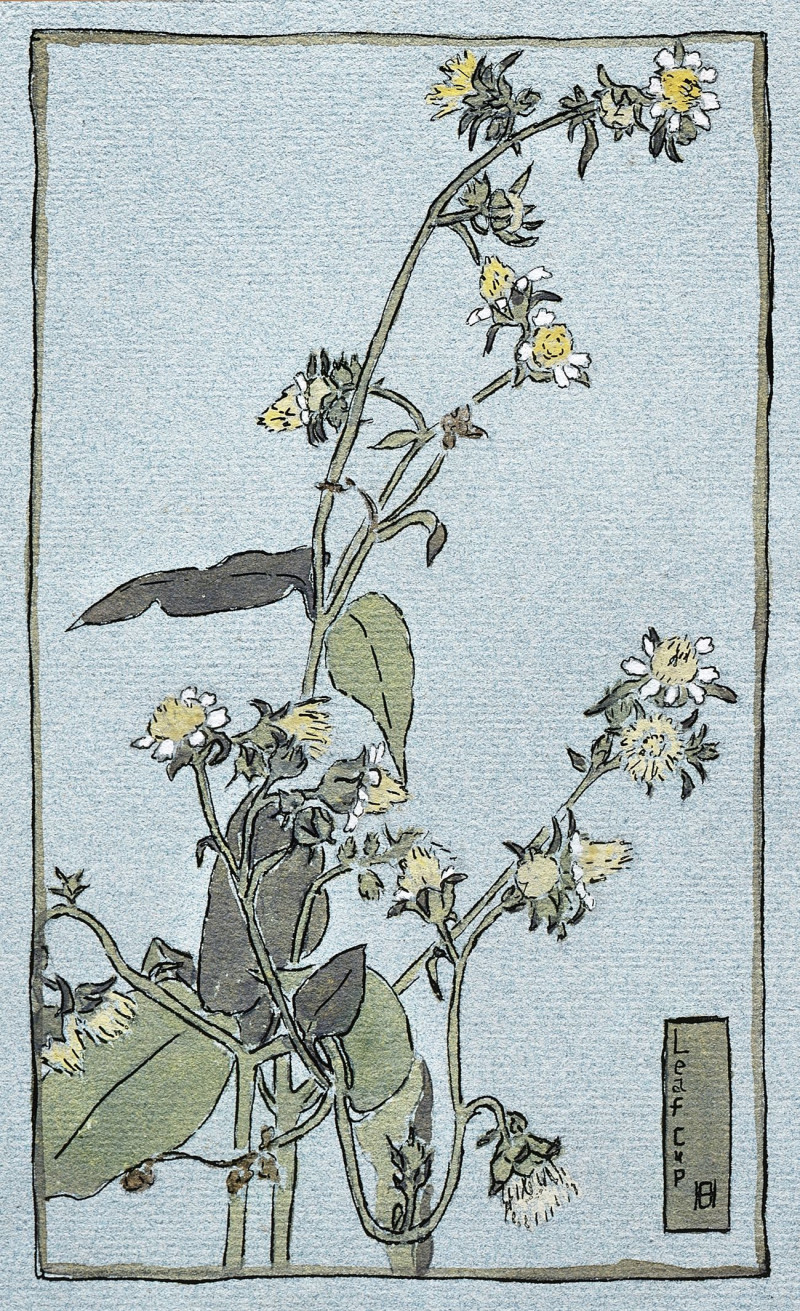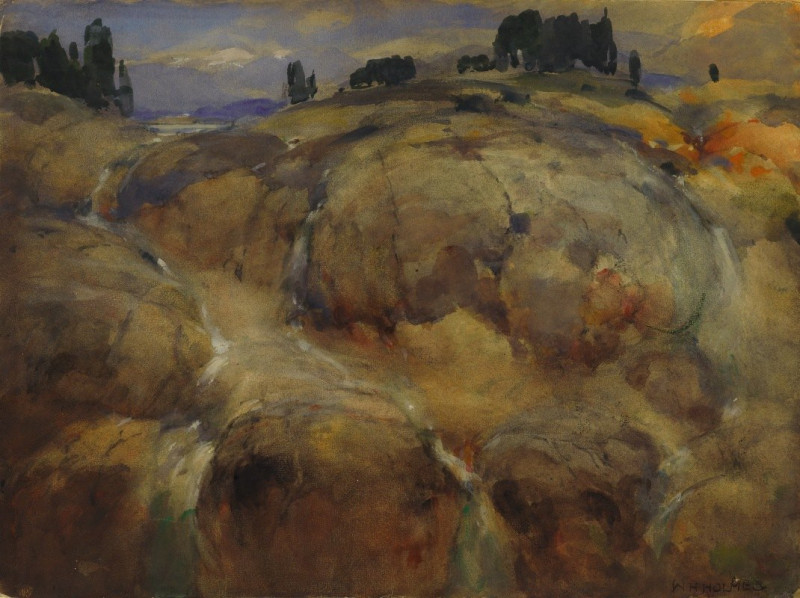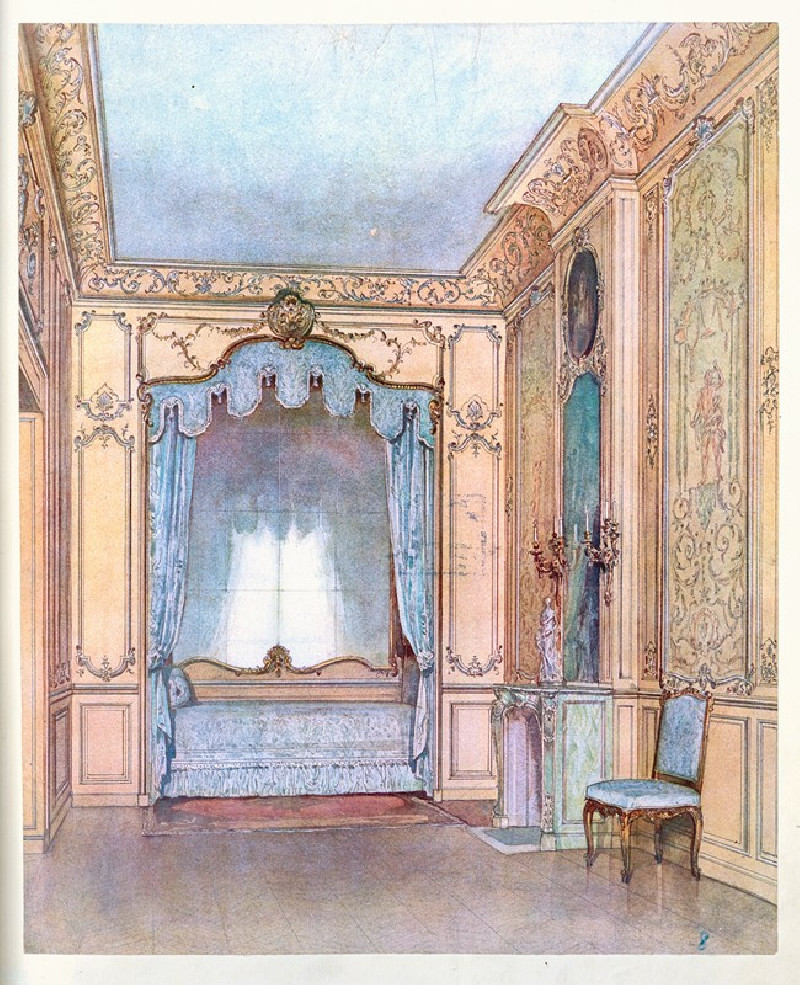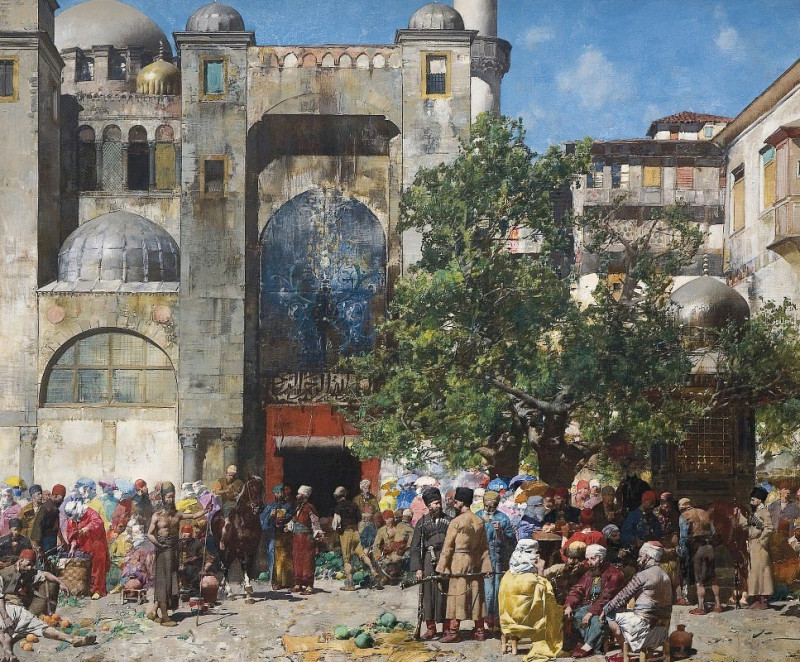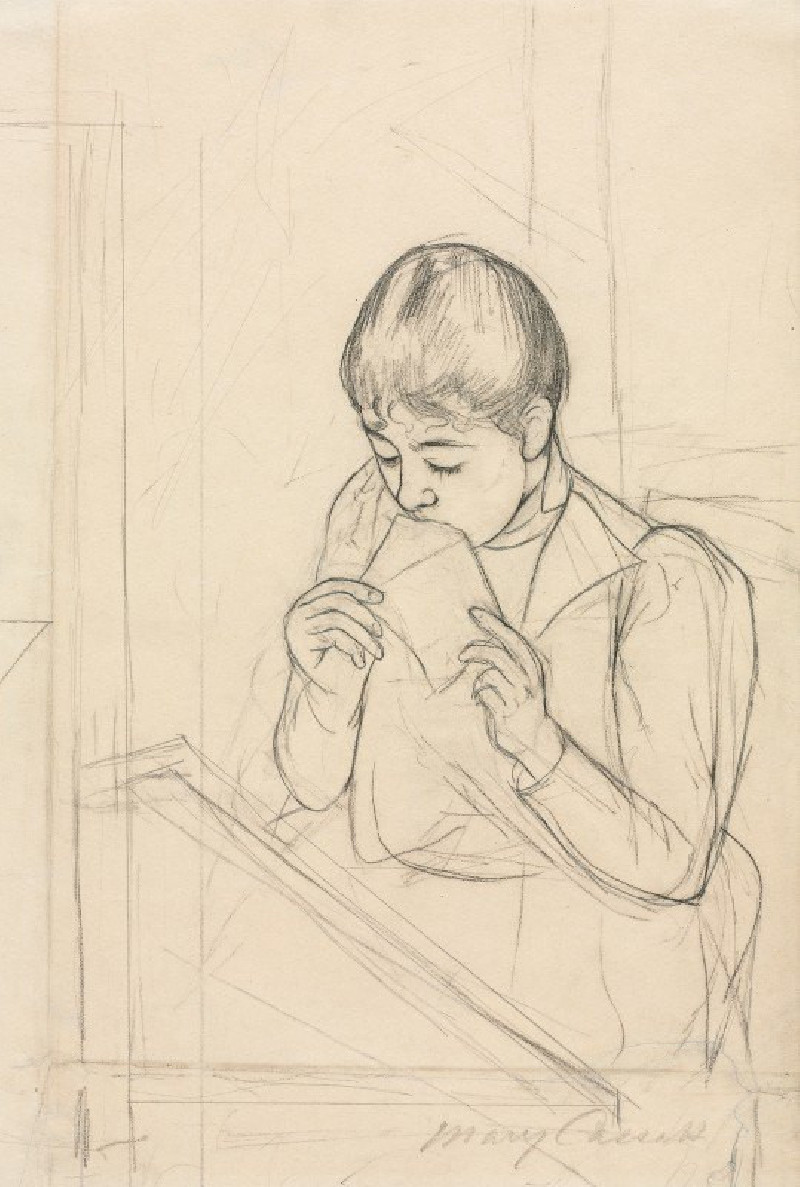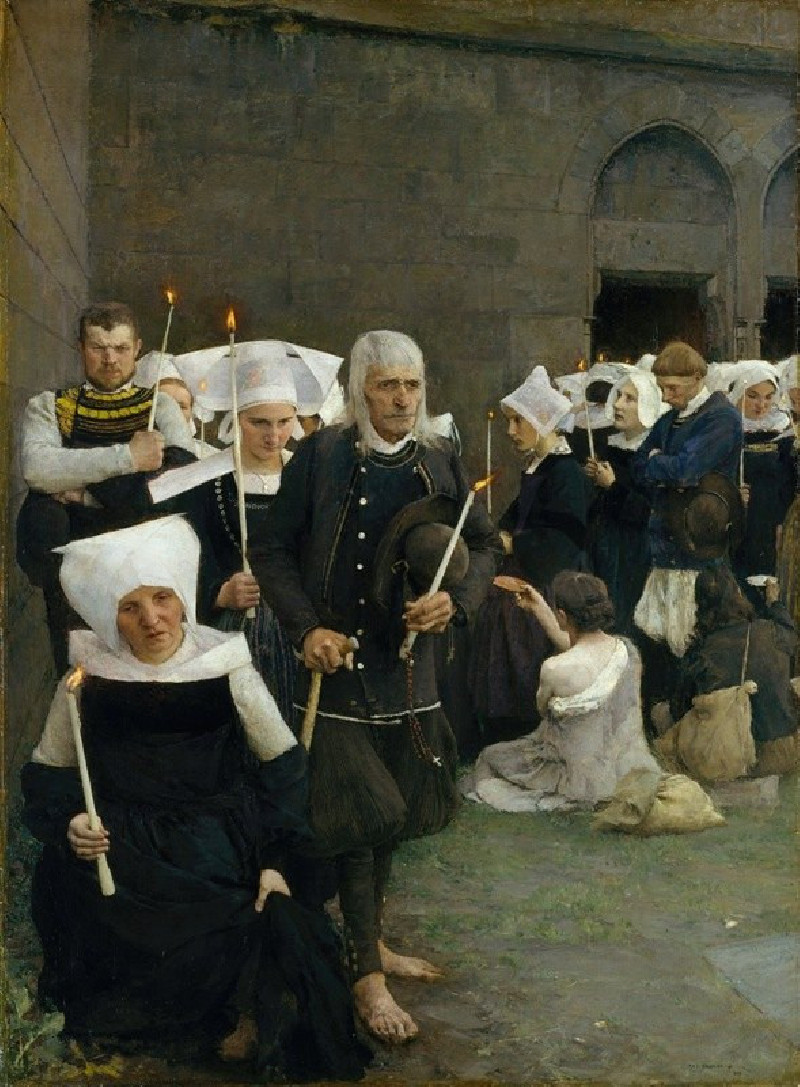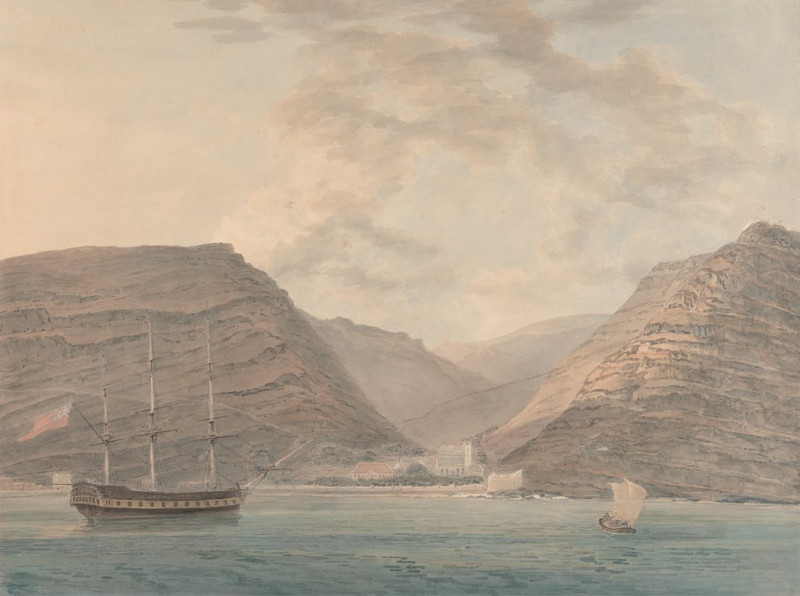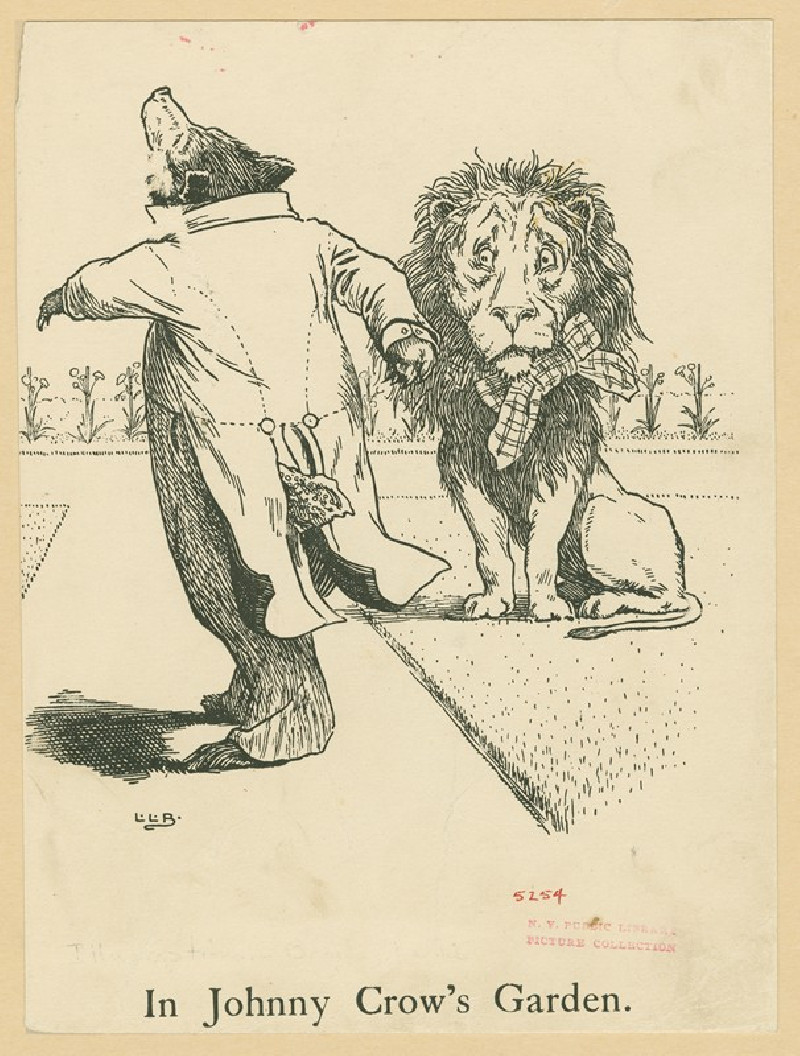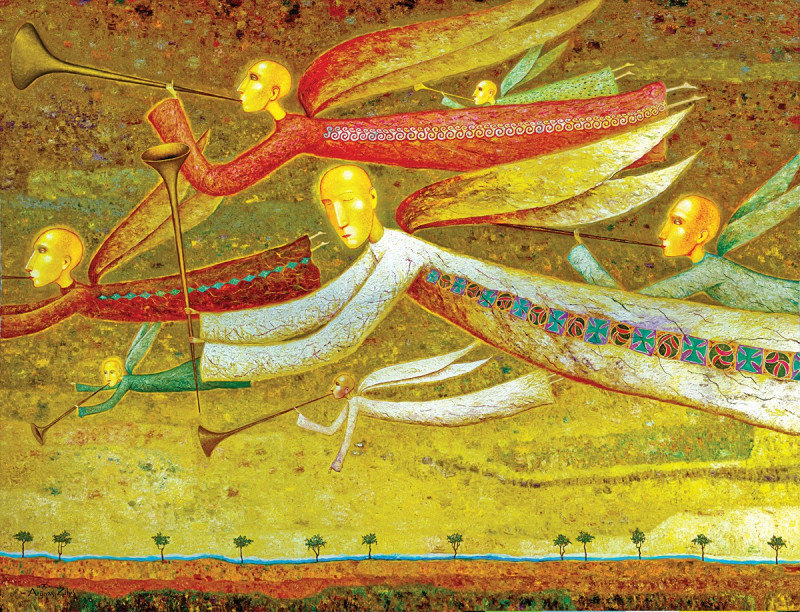The Bar (1920)
Technique: Giclée quality print
Recommended by our customers
More about this artwork
Louis Marcoussis's etching "The Bar," crafted in 1920, provides a fascinating glimpse into the Cubist interpretation of everyday life scenes. In this compelling artwork, Marcoussis deconstructs the conventional imagery of a bar into an array of geometric forms and interlocking planes. Despite the abstraction, certain elements are recognizable and suggest the setting of a bar or café, which was a favorite social hub during the artist’s time.Central to the composition are fragments that seem to suggest bottles, the corner of a bar counter, and perhaps the hint of a glass. Text elements like "VINS" and "BIÈRE," which mean "wines" and "beer" respectively in French, reinforce the setting. The use of overlapping planes and varied textures adds depth and invites viewers to untangle the visual puzzle, piecing together the bar scene from the abstract forms."The Bar" stands as a testament to Marcoussis's skill in etching and his innovative approach to Cubism, an artistic movement known for its fragmentation of objects and simultaneous multiple viewpoints.
Delivery
Returns
Louis Marcoussis, formerly Ludwik Kazimierz Wladyslaw Markus or Ludwig Casimir Ladislas Markus, was a painter and engraver of Polish origin who lived in Paris for much of his life and became a French citizen.
After studying law briefly in Warsaw he went to the Kraków Academy of Fine Arts, where his teachers included Jan Stanislawski and Jozev Mehoffer.

